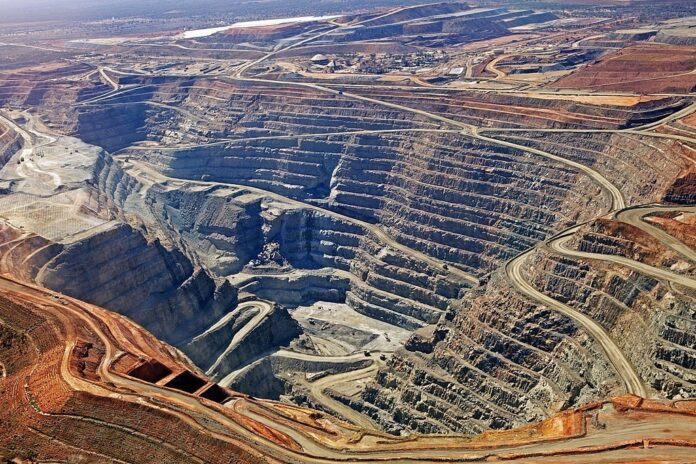Horror story for gold investors continues Friday
 Gold suffered a second day of selling on Friday, shedding more than $10 an ounce to a 2-week low.
Gold suffered a second day of selling on Friday, shedding more than $10 an ounce to a 2-week low.
The precious metal was hurt this week by a new more hawkish tone from the US Federal Reserve, weakening demand from Asia, continued outflows from gold-backed exchange traded funds and a spillover in negative sentiment from plunging gold mining stocks.
In early afternoon trade on the Comex market in New York December gold futures changed hands at $1,312.60 down $11.10 or 0.8% from yesterday’s close, up from lows for the day of $1,305.60.
Gold was poised to shed more than 3% in value this week after a 2% dip on Thursday and is down 20% this year.
On Wednesday, the US central bank left the door open to start throttling back the quantitative easing program that is set to top $4 trillion by the end of the year when it next meets in December, boosting the dollar and sending gold in the opposite direction.
Also impacting negatively on sentiment in the gold market was a second day of heavy selling of gold miners wiping billions in market value off the sector.
Top producer Barrick Gold (NYSE:ABX) set to mine more than 7 million ounces this year, lost another 7.5% on Friday after a 5.4% decline yesterday following the announcement of an unprecedented $3 billion stock sale at a deep discount.
The stock has shed more than $2 billion in value the last two days and is down 48% so far in 2013. At just under $18 billion market value the company is now valued more than $30 billion below what is was just over two years ago.
While some of the pain for Barrick was self-inflicted, other gold counters also sold off again on Friday.
The world’s most valuable gold company Goldcorp (TSE:G) and world number two producer Newmont Mining both fell more than 4% in value. Vancouver-based Goldcorp is down a third in value this year, while Denver headquartered Newmont is 44% cheaper than at the start of the year.
Continued outflows from the gold-backed ETF market was more evidence of negative momentum building up in the gold market.
Holdings in the world’s largest gold ETF, SPDR Gold Shares (NYSE: GLD) are at their lowest level since February 2009.
In 2003 GLD saw outflows of 504 tonnes to 866 tonnes, down more than 35% from the record high of 1,351.24 tonnes hit early December last year. Net sales of GLD so far in October was 40 tonnes, the worst performance since July.
Silver for December delivery was also weaker on Friday, down slightly to $21.85, after falling more than 3%.
The biggest silver ETF, the iShares Silver Trust, also recorded a monthly outflow of 127.4 tonnes in October, its first since June.
More News
Barrick eyes 30% production growth by 2030
The company is also considering changing its name from Barrick Gold to Barrick Mining to reflect its changing production profile, chairman John Thornton said.
April 04, 2025 | 03:26 pm
Trump, tariffs and tin
Only one metal has escaped the tariff tsunami.
April 04, 2025 | 01:44 pm
{{ commodity.name }}
{{ post.title }}
{{ post.excerpt }}
{{ post.date }}



2 Comments
frankinca
Well the weak hands are leaving and only those who chose to hold, instead of fold will be the winners after the excesses have been eliminated. Yes, those who thought gold was going straight back to 1800+ have fled and now the true believers are left. Are they able to keep unknowledgeable investors interested, that is the challenge! China, India and all the countries with a very long history are still in the game because they have been through these cycles several times and gold is still their safety net.
Yesterday, on CNBC the price of gold which is flashed at the top of the screen every minute or so was back-grounded in yellow and the words in red “GOLD and the price change”, which made me very curious. Is someone in the broader sense using psychological techniques to give gold investors a negative sense of that investment and others as well? Any CNBC’ers who might have a better explanation would allow me to abandon the conspiracy camp of which this display made me a temporary member, I hope. CB’s have lots of influence and it would be their benefit to try to tarnish gold, which we know is nearly impossible, it can be dulled by rough usage, and that is what is going on now, do you agree? It looks like gold will be in a trading range of 1200 to 1400 for now. Supported by smart bullion buyers who can’t resist a bargain. Case closed!
Gary
The Fed has said that QE will only taper off once the unemployment rate comes down to 6.5% from it’s current 7.2%. Which part of that statement do investors not understand?
On the other hand it also appears that the Fed seems to like yanking the chain every other week for whatever reason. Can only cry wolf for so long